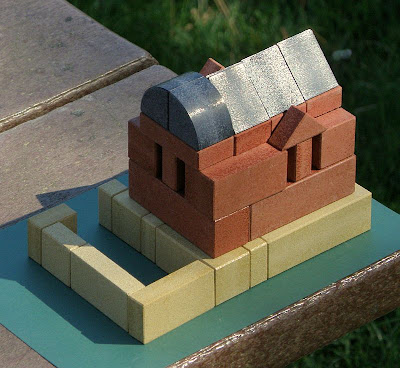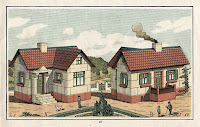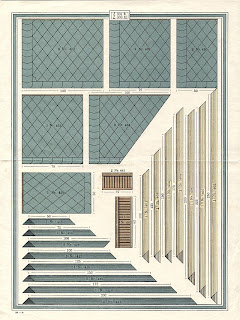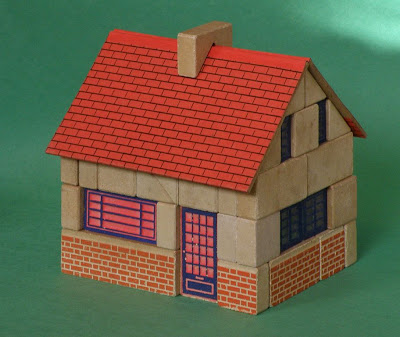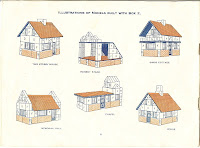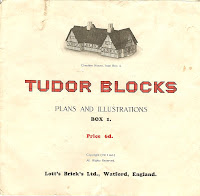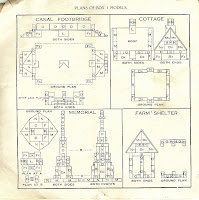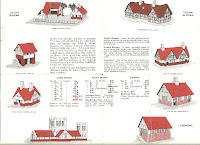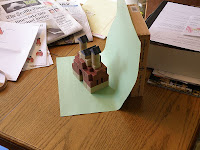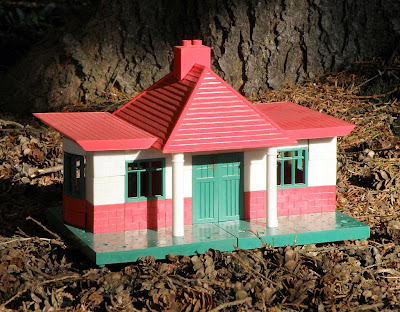 Yesterday in a favorite neighborhood used book store, I picked up a nice pictorial of Pavilions,
Yesterday in a favorite neighborhood used book store, I picked up a nice pictorial of Pavilions, 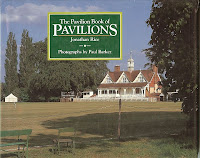 which is British for the building alongside a cricket pitch. I'm not particularly interested in cricket, but I enjoy the architecture of small vernacular buildings, and the pavilions at village cricket pitches can be quite small and vernacular. From there they range up to large and ornate for the major contenders, but even they tend to be interesting in their ornateness. It was cheap, I had a store credit from selling them some of my discards, so it came home with me.
which is British for the building alongside a cricket pitch. I'm not particularly interested in cricket, but I enjoy the architecture of small vernacular buildings, and the pavilions at village cricket pitches can be quite small and vernacular. From there they range up to large and ornate for the major contenders, but even they tend to be interesting in their ornateness. It was cheap, I had a store credit from selling them some of my discards, so it came home with me. Then yesterday's mail brought me Gary Birch's recent Lott's booklet from the Lott's hometown Bushey Museum - I highly recommend this fine (and inexpensive!) booklet to anyone with an interest in Lott's or construction sets in general. I learned a lot (pun accepted) not just about Lott's, but about the construction toy business in the between-wars and postwar eras.
Then yesterday's mail brought me Gary Birch's recent Lott's booklet from the Lott's hometown Bushey Museum - I highly recommend this fine (and inexpensive!) booklet to anyone with an interest in Lott's or construction sets in general. I learned a lot (pun accepted) not just about Lott's, but about the construction toy business in the between-wars and postwar eras.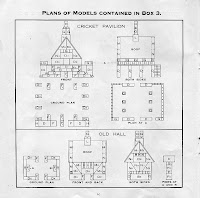 To cap it all off, a new batch of Lott's manual scans arrived in my email this morning, with the first structure being a cricket pavilion.
To cap it all off, a new batch of Lott's manual scans arrived in my email this morning, with the first structure being a cricket pavilion.How could I resist?
Not enough blocks? I borrowed some from size-compatible American-made Liberty Blocks, hiding them in back.
 No roofs? I still had the homemade roof from my first Lott's Tudor post, and cut a 8.75" x 6.375" piece of ordinary cardboard to serve as the floor, in lieu of the second roof being used as such.
No roofs? I still had the homemade roof from my first Lott's Tudor post, and cut a 8.75" x 6.375" piece of ordinary cardboard to serve as the floor, in lieu of the second roof being used as such.Not enough sense? When has that ever stopped me?
Well, maybe it should have slowed me down a bit. Then I might have gotten the proper red brick under the front stairs. And I might have used the least chipped Dii lined brick in the most obvious position on the lower front, rather than the most chipped.
Ah, well. I kind of needed to build something & it was fun.
Good block play.
